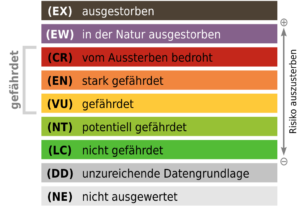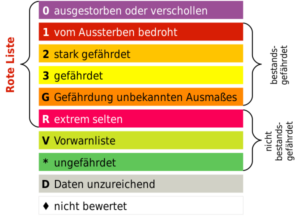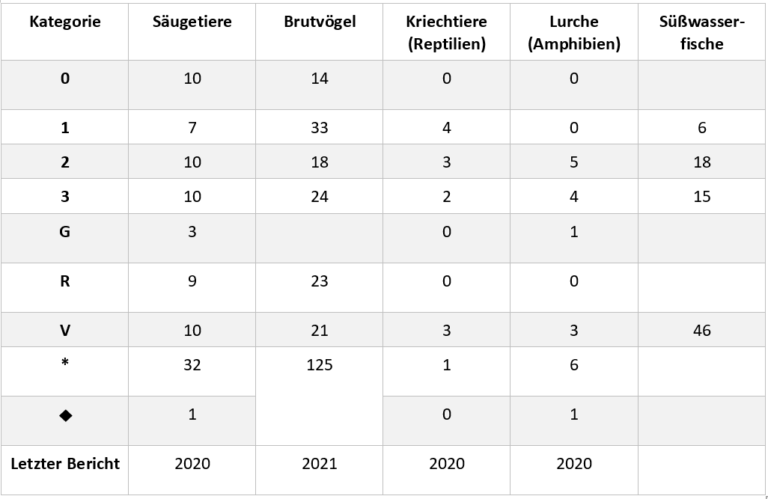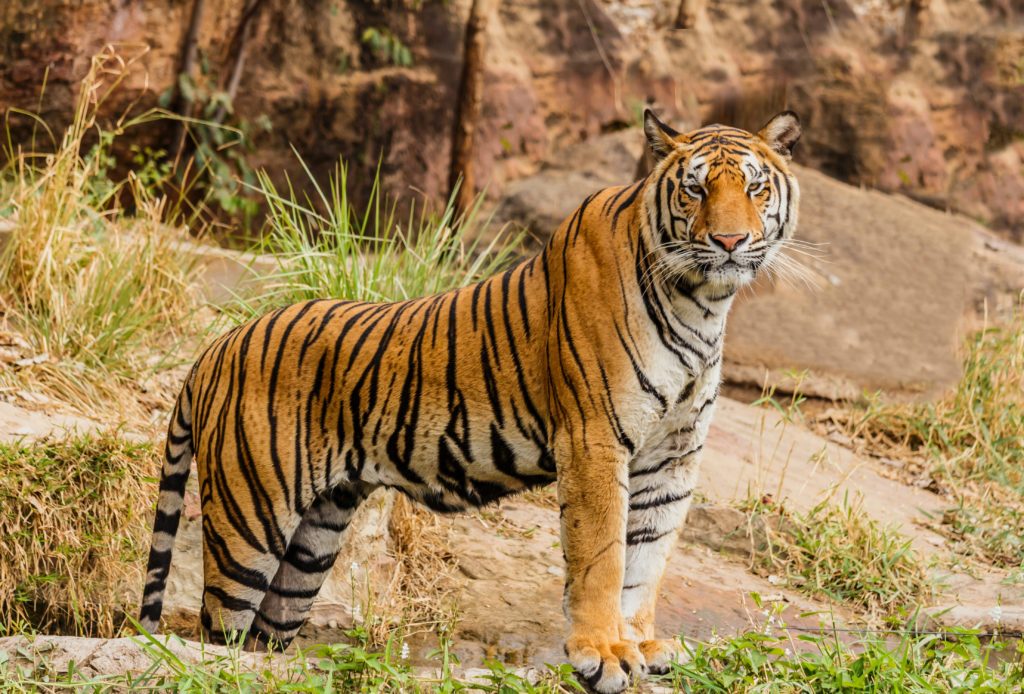That’s exactly what we’re talking about below. We also explain why this species extinction is happening in the first place, what exactly the Red List of Threatened Species has to do with it, and what the situation is like in Germany. Finally, you can read why we should preserve biodiversity and how we can do that.
What exactly is causing the current mass extinction?

What is the Red List of threatened species?
The Red List of Threatened Species, or Red List for short, summarizes animal and plant species worldwide whose existence is threatened. The International Union for Conservation of Nature and Natural Resources (IUCN) updates the list approximately every two years.
IUCN is an international non-governmental organization (NGO), i.e. an independent body. It consists of 1,400 members from over 170 countries, including (inter)national NGOs and representatives of indigenous peoples. The first Red List was published by IUCN in 1962. Initially, only species of mammals, birds, reptiles and amphibians were represented, but later fish and insects were also included. Finally, in 1998, plant species were included.

The IUCN Red List has several objectives:
First, it is intended to provide an independent basis on which international legislators can build when developing measures for species, nature and environmental protection. In addition, the Red List provides a basis for decision-making, as it shows where priorities need to be set in species conservation. Objectivity is very important here: there are no vested interests behind the Red List, making it a reliable source of information for decision-makers.
STAR Score
For example, the Species Threat Abatement and Recovery (STAR) assessment criterion was recently created based om the Red List. It’s a tool that measures what human activity is having what impact on the extinction of what species anywhere in the world. The STAR score informs us about the type of actions, locations, and urgency with which they must be taken. The Red List is used as a guide to identify the risk to which different species are exposed.
The Red List shows which threats exist for which species, how these vary by country, and how severe they are. In addition, the Red List communicates which developments are to be expected. At the same time, the recommendations and guidelines are not legally binding. Thus, this list is in contrast to the Fauna-Flora-Habitat (FFH) Directive, which legally designates nature reserves. At the same time, the Red List is intended to sensitize society to the protection of nature and species. This can ultimately stimulate a sustainable use of our resources.
How does the Red List work?

Red List 2022

In the 2022 Red List, there were several conspicuous negative trends that are now considered CR (Critically Endangered). These include the monarch butterfly, tigers, African elephant species, the field hamster, and right whales. Other species, such as gorillas, have been threatened with extinction for years.
The Red List in Germany


Why is biodiversity important?









